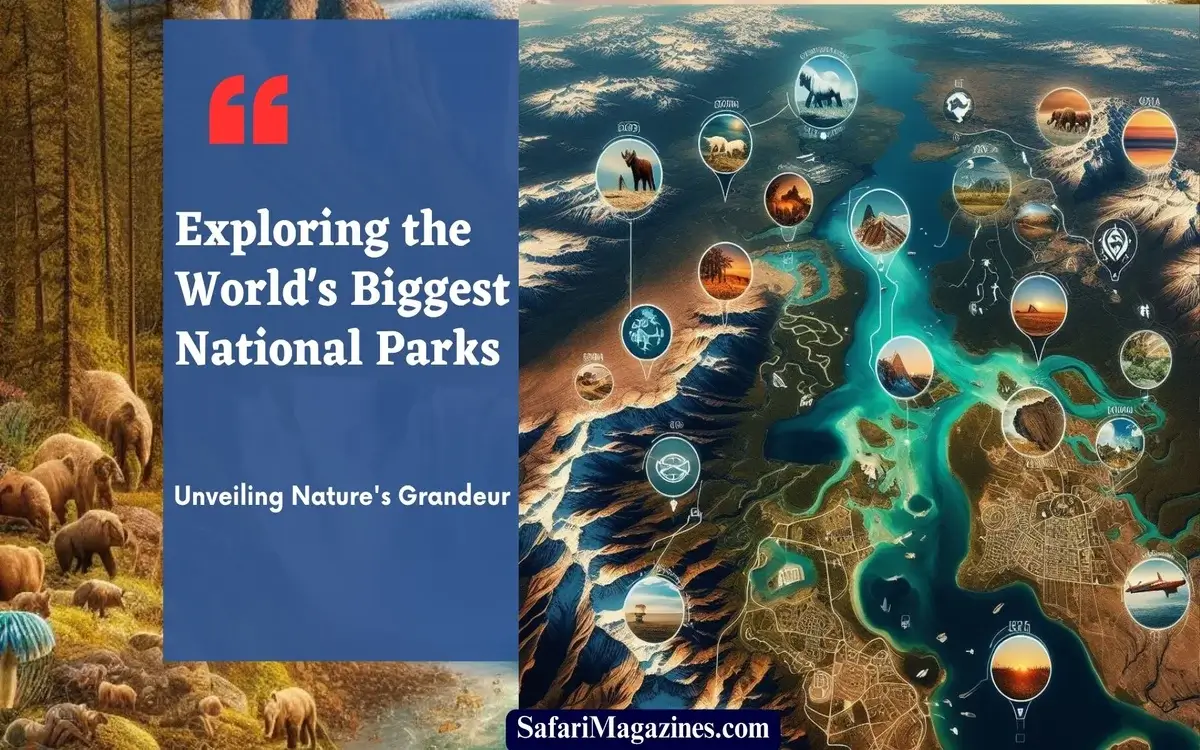
World’s Biggest National Parks, Unveiling Nature’s Grandeur. National parks are havens of natural beauty, preserving natural areas, wildlife and cultural heritage for future generations. Among these, some parks stand out not just for their beauty, but for their sheer size and grandeur. Let’s start a journey through some of the world’s biggest national parks, where stunning views and varied ecosystems.
Table of Contents
Toggle1. Yellowstone National Park
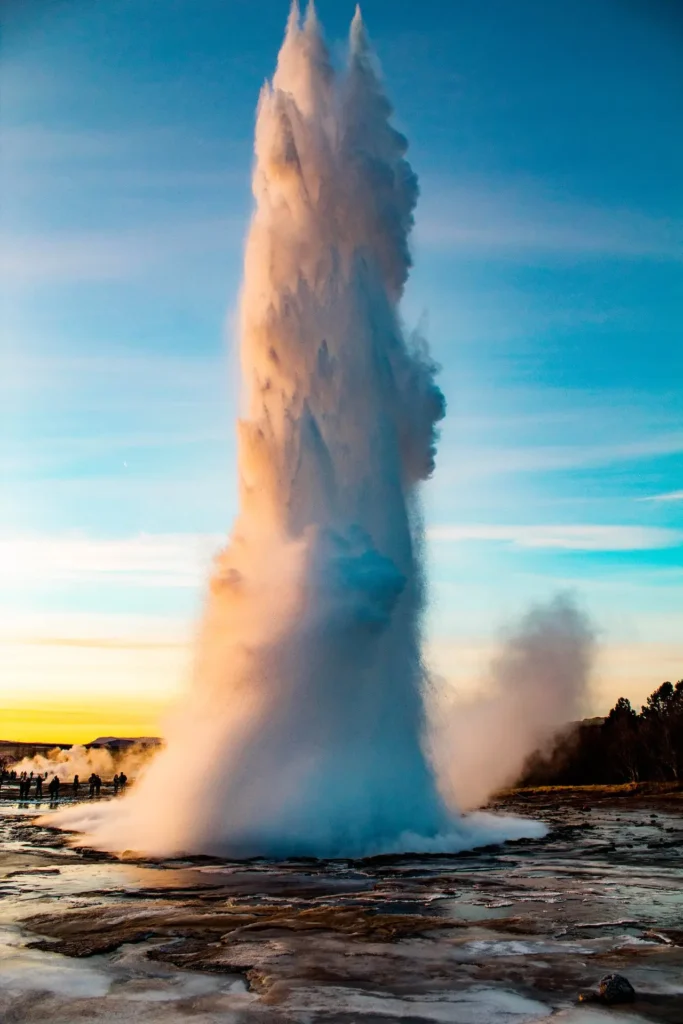
Yellowstone National Park is the crown jewel of the national park system. Established in 1872, Yellowstone holds the title of being the first national park in the world, and it’s a title it wears with pride. Spanning over 2.2 million acres (8903.08 km2) across Wyoming, Montana, and Idaho, this park is truly colossal. Its geothermal wonders, including the famous Old Faithful geyser, attract millions of visitors each year. So, Yellowstone is not only known for its geysers, but it is also home to a wide range of wildlife, including grizzly bears and wolves. This makes it a paradise for nature lovers and photographers.
2. Wrangell-St. Elias National Park
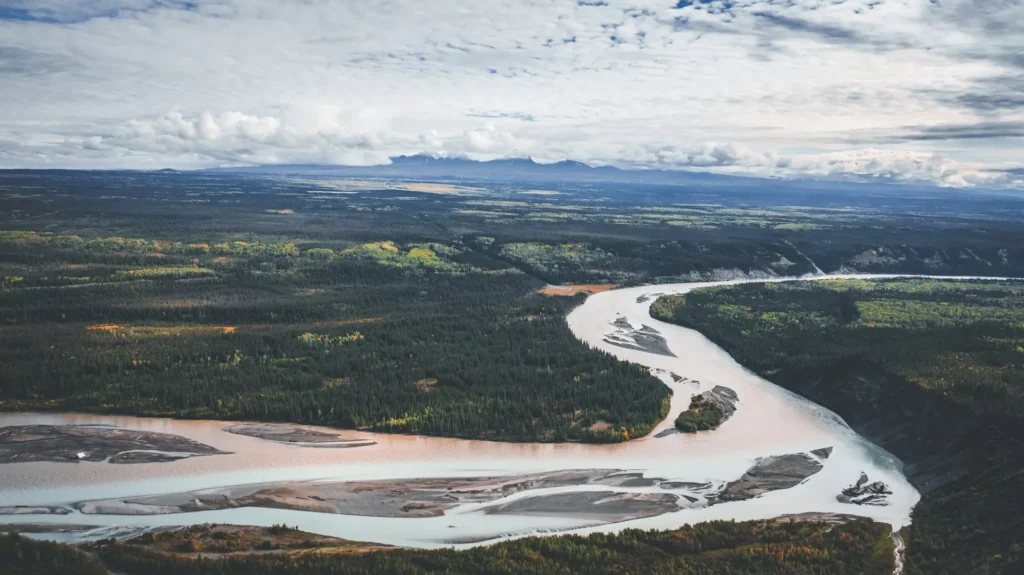
Nestled in the remote wilderness of Alaska, Wrangell-St. Elias National Park holds the distinction of being the largest national park in the United States. Encompassing over 13 million acres (52609.13 km2), it’s larger than Switzerland! Here, visitors can explore vast expanses of rugged mountains, towering glaciers, and pure wilderness. From hiking and backpacking to wildlife viewing and mountaineering, Wrangell-St. Elias offers endless opportunities for adventure and exploration.
Continue reading: Exploring the World’s Biggest National Parks: Unveiling Nature’s Grandeur
3. Gates of the Arctic National Park
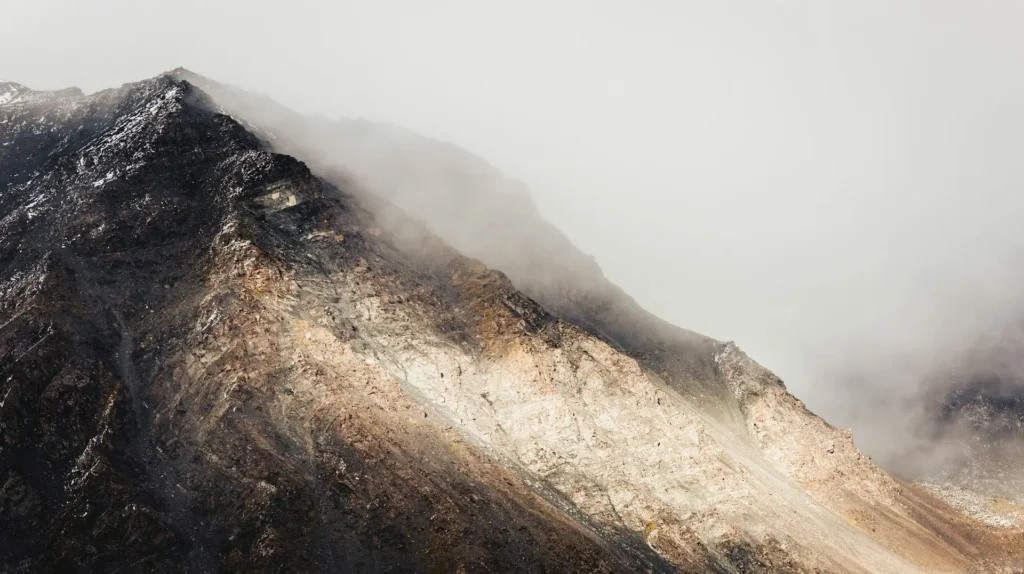
For those seeking true solitude and wilderness immersion, look no further than Gates of the Arctic National Park. Located entirely above the Arctic Circle in Alaska, this park is as remote as it gets. It’s area more than 8.4 million acres (33993.6 km2). With no roads or trails, visitors must rely on bush planes or their own two feet to access this pristine wilderness. But for those willing to make the journey, the rewards are plentiful. From vast tundra expanses to rugged mountains and meandering rivers, Gates of the Arctic offers a true wilderness experience unlike any other.
4. Denali National Park

Home to North America’s highest peak, Denali National Park is a land of superlatives. It include more than 6 million acres (24281.14 km2) of wild nature. Towering at 20,310 feet, Denali (formerly known as Mount McKinley) dominates the landscape, beckoning adventurers from around the world to its snowy slopes. But Denali is more than just a mountain; it’s a vast wilderness teeming with life. Amid stunning alpine scenery, visitors to the park can see grizzly bears, moose, caribou, and wolves.
5. Katmai National Park
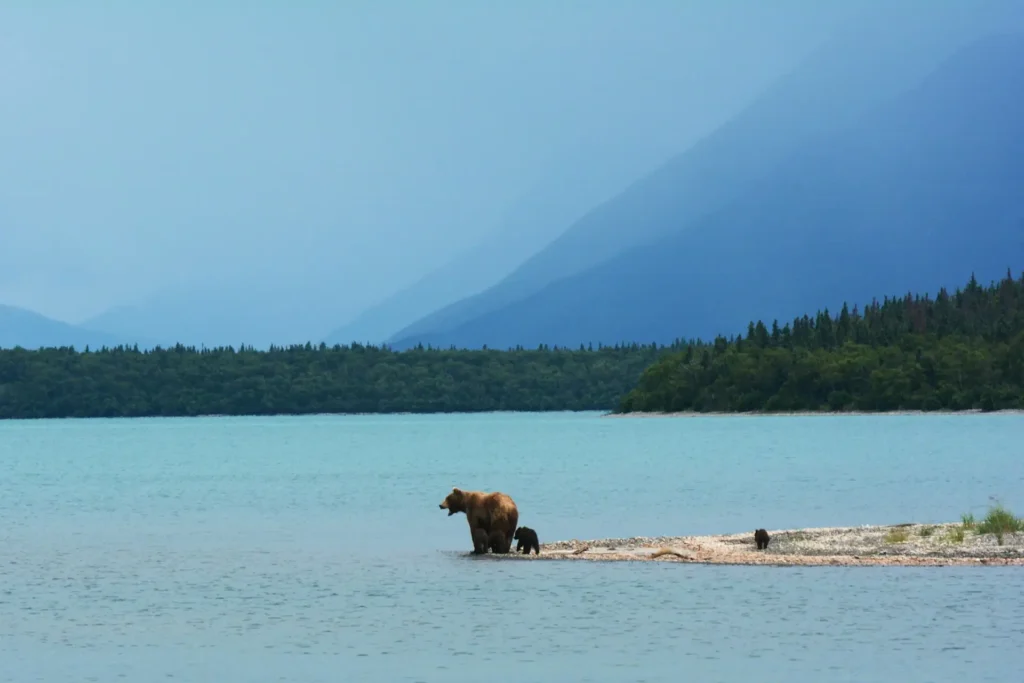
In the wilds of southern Alaska lies Katmai National Park, famous for its staggering population of brown bears and one of the largest volcanic eruptions of the 20th century. It covers over 4 million acres (16187.43 km2) of wild nature. Here, visitors can witness the stunning sight of bears feeding on salmon as they migrate upstream, a spectacle unlike any other in the natural world. But Katmai isn’t just about bears; it’s also home to rugged coastlines, pristine lakes, and the haunting remnants of volcanic activity.
Continue reading: Exploring the World’s Biggest National Parks: Unveiling Nature’s Grandeur
6. Great Smoky Mountains National Park
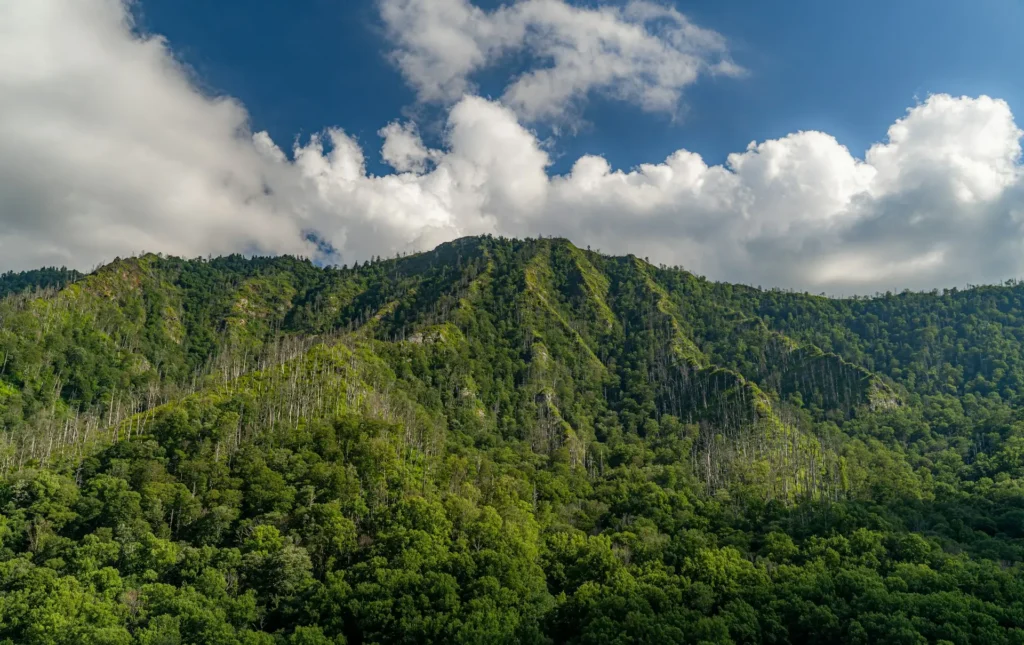
Spanning the border between North Carolina and Tennessee, Great Smoky Mountains National Park is a land of misty peaks, lush forests, and vibrant wildlife. This national park covers more than 800 square miles (2072 km2). Being the most visited national park in the United States, it has something to offer everyone, including scenic drives, hiking trails, historic homes and cultural exhibits. With more than 11 million visitors annually, the Great Smoky Mountains remain a favorite destination for nature lovers and outdoor enthusiasts.
7. Yosemite National Park
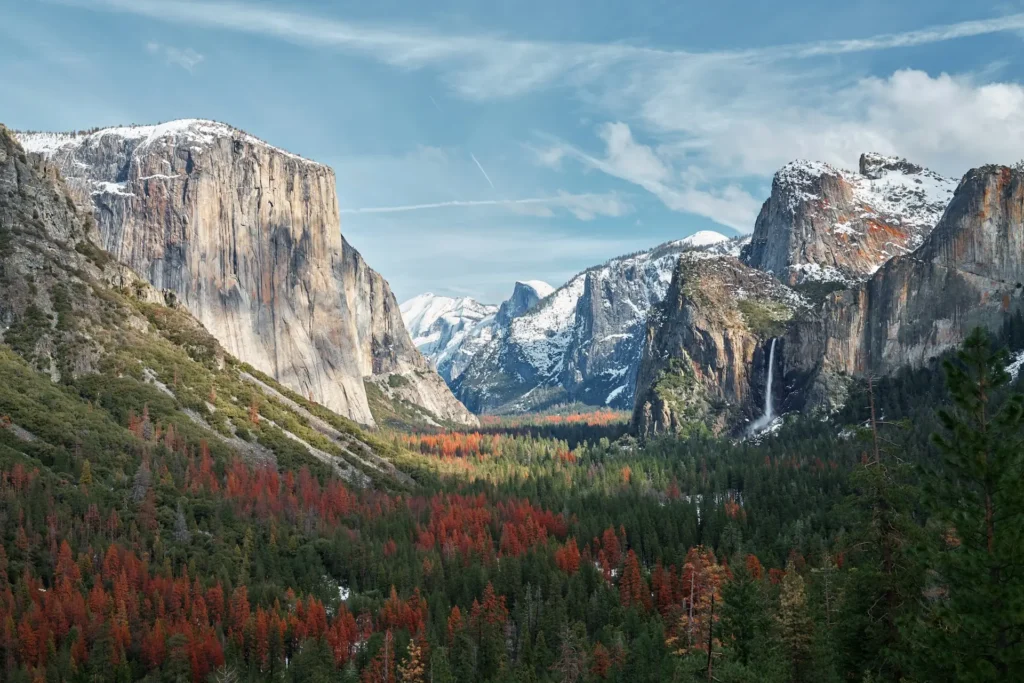
Located in California’s Sierra Nevada Mountains, Yosemite National Park is known for its impressive granite cliffs, impressive waterfalls, and ancient sequoia trees. This national park spanning an area of 750,000 acres (3035.14 km2). Yosemite National Park is also a UNESCO World Heritage Site. So, Yosemite’s stunning landscape has inspired artists, writers, and explorers throughout the ages. Visitors can explore the park’s countless trails, rock climb its sheer walls, or simply enjoy in the beauty of its natural wonders.
8. Rocky Mountain National Park
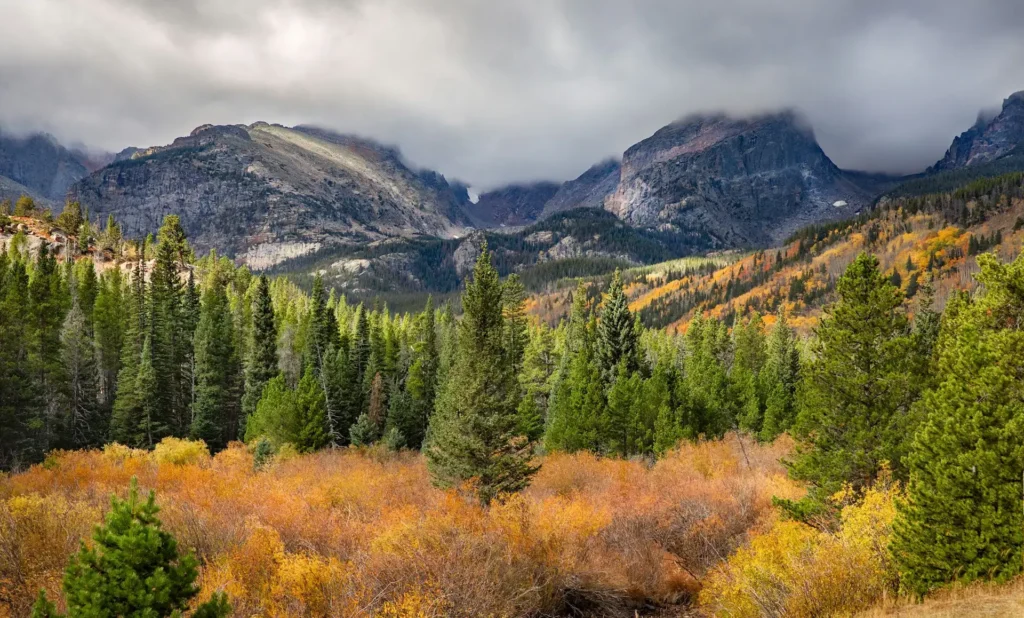
Situated in the heart of Colorado’s Rocky Mountains, Rocky Mountain National Park is an outdoor enthusiast’s playground. With more than 415 square miles (1074.85 km2 )of alpine meadows, jagged peaks, and pure lakes, it’s no wonder this park attracts millions of visitors each year. The Rocky Mountains provide countless chances for adventure and exploration, whether you’re hiking to witness breathtaking views, observing wildlife in the wilderness, or simply having a picnic by a mountain stream.
9. Grand Canyon National Park
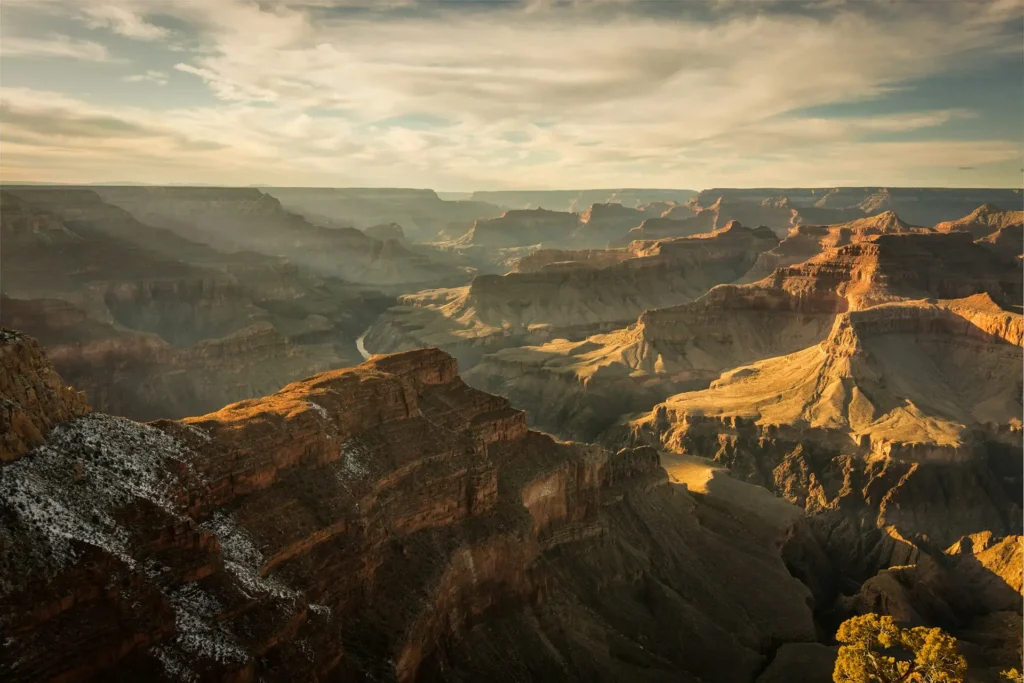
Carved by the mighty Colorado River over millions of years, the Grand Canyon is one of the world’s most awe-inspiring natural wonders. Stretching for 277 miles (717.427 km2) across northern Arizona, Grand Canyon National Park offers visitors the chance to witness geological history laid bare. Whether you’re hiking into the canyon, rafting the Colorado River, or simply gazing out over its vast expanse, the Grand Canyon will surely leave you in awe.
Continue reading: Exploring the World’s Biggest National Parks: Unveiling Nature’s Grandeur
10. Everglades National Park
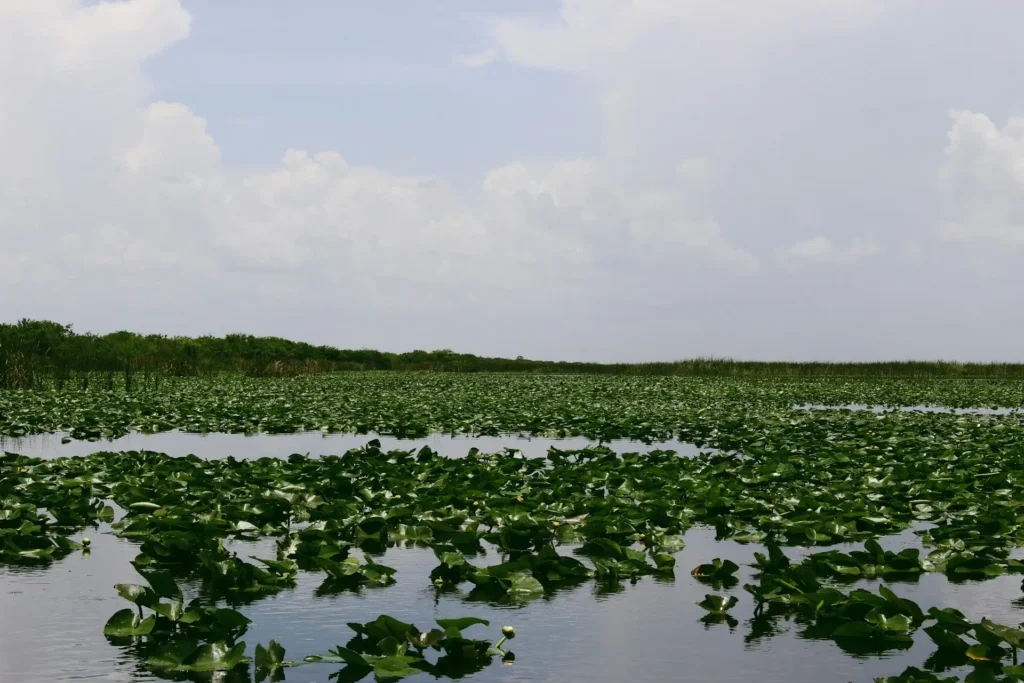
Welcome to the watery wilderness of Everglades National Park, a UNESCO World Heritage Site and International Biosphere Reserve. Spanning 1.5 million acres (6070.29 km2) in southern Florida, the Everglades is the largest tropical wilderness of any kind in the United States. Here, visitors can paddle through mangrove forests, spot alligators sunning themselves on riverbanks, and marvel at the incredible diversity of birdlife that calls this unique ecosystem home.
11. Olympic National Park
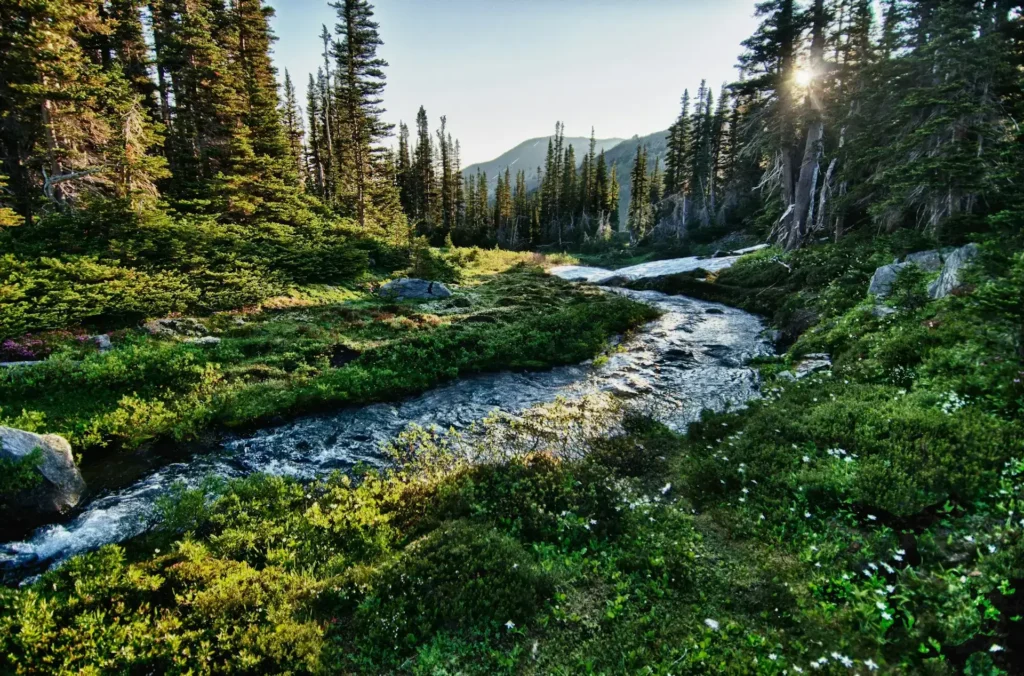
From snow-capped peaks to rugged coastlines, Olympic National Park in Washington state boasts an incredible diversity of ecosystems. As a UNESCO World Heritage Site, the park protects more than 1,400 square miles km2) of pure wilderness, including temperate rainforests, alpine meadows, and wild Pacific beaches. Whether you’re hiking through ancient forests, soaking in natural hot springs, or watching for whales off the coast, Olympic offers endless opportunities for outdoor adventure.
Continue reading: Exploring the World’s Biggest National Parks: Unveiling Nature’s Grandeur
12. Death Valley National Park
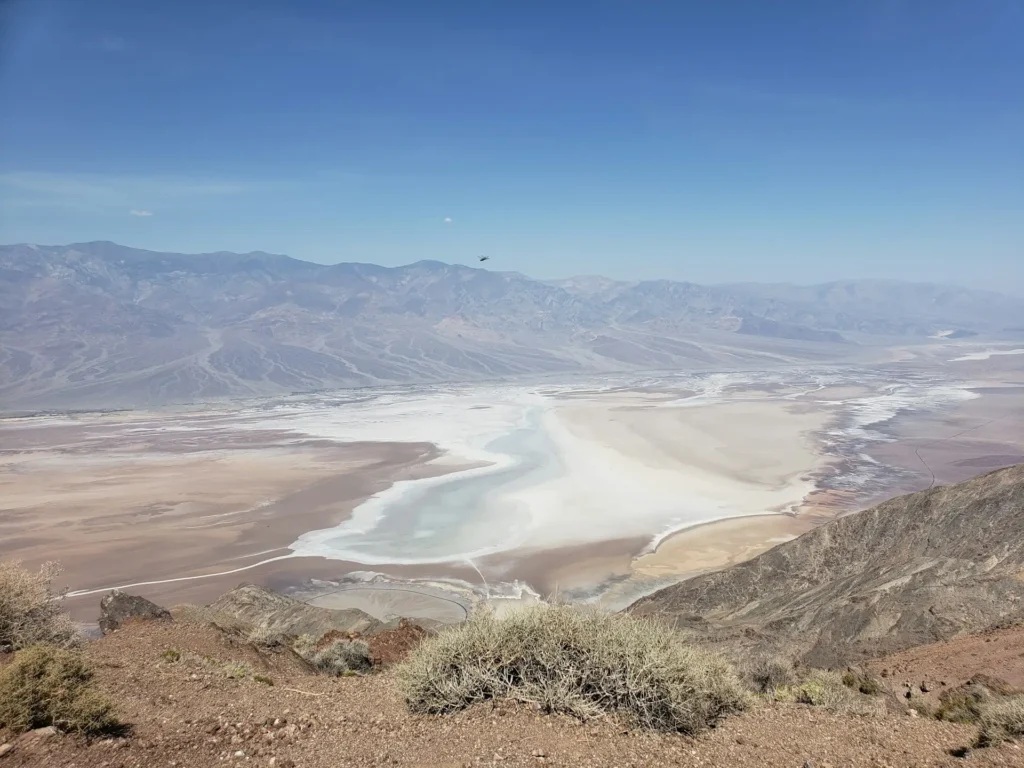
Venture into the depths of Death Valley National Park, the hottest, driest, and lowest national park in the United States. This national park covers an area of more than 3.4 million acres (13759.31 km2). Despite the harsh desert conditions, Death Valley is home to a wide variety of life, from resilient desert plants to rare desert sheep. Visitors can explore surreal landscapes like the towering Mesquite Flat Sand Dunes, the otherworldly Badwater Basin, and the colorful Artist’s Palette.
13. Voyageurs National Park
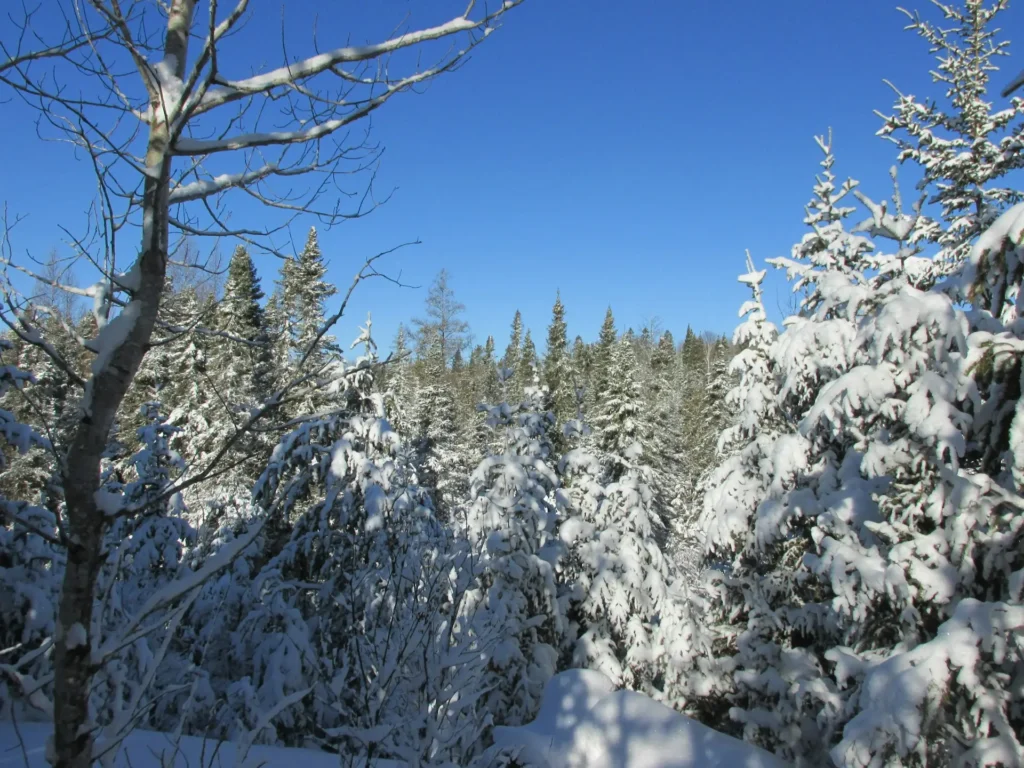
Discover the land of sky-blue waters at Voyageurs National Park in northern Minnesota. Voyageurs National Park is a haven for paddlers, with a vast expanse of interconnected lakes, rivers and wetlands spanning more than 200,000 acres (809.37 km2). It was named after the French-Canadian fur traders who used to navigate its waterways. Whether you’re kayaking through quiet bays, fishing for walleye and northern pike, or camping on remote islands under the stars, Voyageurs offers a true wilderness escape.
14. Kobuk Valley National Park

Journey to the remote wilderness of Alaska’s Arctic to experience the untamed beauty of Kobuk Valley National Park. Encompassing over 1.7 million acres (6879.66 km2), this vast wilderness is characterized by rolling sand dunes, boreal forests, and the winding Kobuk River. Visitors can hike, camp and canoe through pure wilderness, surrounded by stunning views and abundant wildlife. With its rugged beauty and sense of isolation, Kobuk Valley offers a truly unforgettable wilderness experience.
15. Sanjiangyuan National Park
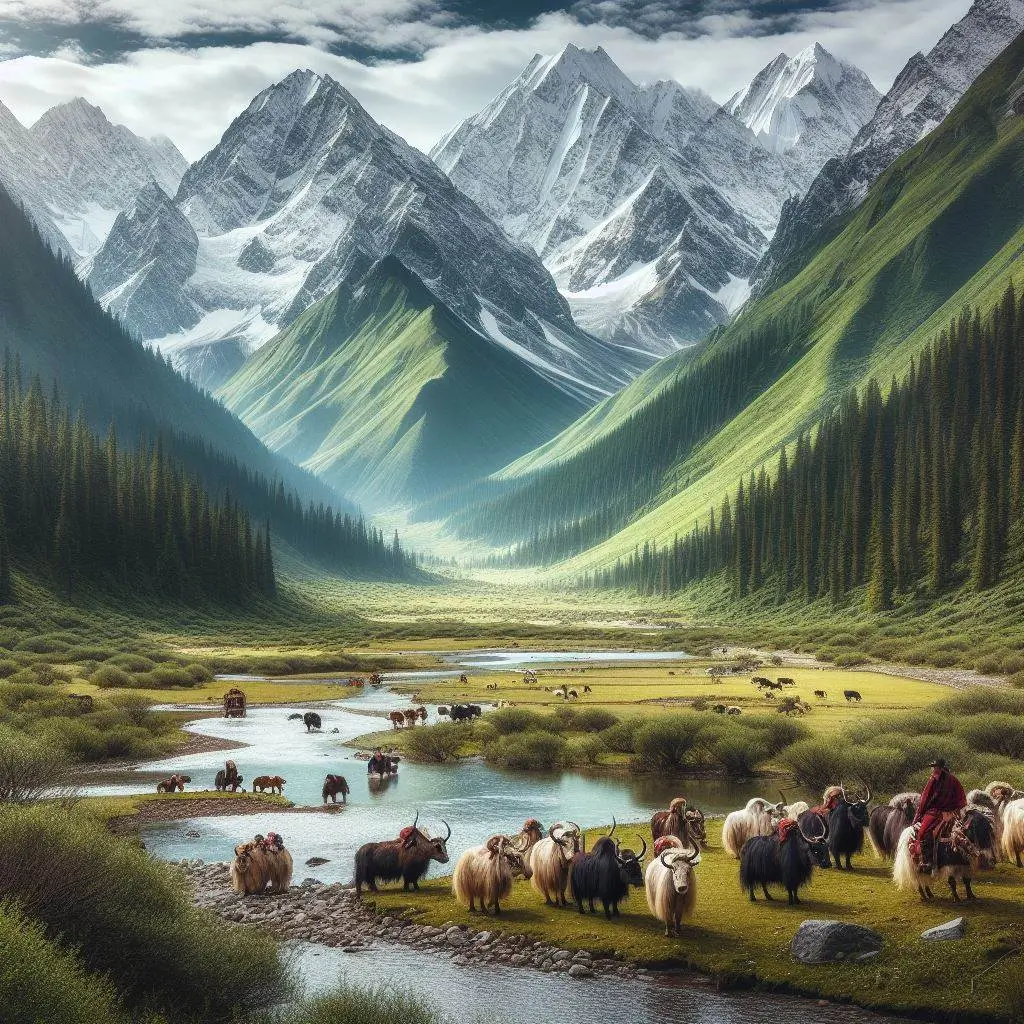
Sanjiangyuan National Park, known as the source of three rivers, is the largest national park in China, and in the entire continent of Asia. Its area covers more than 152,000 km2. This national park has hundreds of nature reserves that stretch across grasslands, ponds, forests and deserts. With its vast area and diversity of wildlife, this national park is worth a visit. Visitors can explore the magnificent landscapes of Sanjiangyuan National Park, learn about endangered species such as snow leopards and Tibetan antelope, and gain an insight into the region’s rich cultural heritage.
Related topics:
- Earth’s Largest National Parks by Continent: Discover the World’s Wilds
- Into the Wild: Largest National Parks in Africa Await Your Discovery
- Discover the Largest National Parks in Europe: Exploring Nature and Wild Landscapes
- Alternative Festivals: Exploring Unconventional Celebrations
- Exploring the Largest National Parks in Asia
- Largest National Parks in Russia: The Ultimate Explorer’s Guide
- Discover the Largest National Parks in Australia: Exploring the Wilderness from Coast to Desert
- Exploring the Biggest National Parks in China: Discovering Nature’s Grandeur
- The Largest National Parks in the USA: Natural Treasures of the USA
Summary
The biggest national parks are not only distinguished by their size, but they also serve as a gateway to stunning landscapes and ecosystems around the world. Whether you’re looking for excitement, quiet places, or the chance to connect with nature, these parks suit everyone. So get ready, hit the trails and explore the wonders of this incredible wilderness first hand.
FAQs About the Biggest National Parks
Q1: What makes national parks important?
A1: National parks play a crucial role in preserving biodiversity, protecting natural landscapes, and providing recreational opportunities for visitors.
Q2: How can I plan a trip to a national park?
A2: Start by researching the park you’re interested in, including its location, activities, and accommodations. Make sure to check for any permits or reservations required, and plan your itinerary accordingly.
Q3: Are national parks suitable for all ages?
A3: Absolutely! National parks offer a wide range of activities suitable for people of all ages, from easy nature walks to challenging hikes and everything in between.
Q4: What are some safety tips for visiting national parks?
A4: Always stay on designated trails, carry plenty of water and snacks, and be aware of wildlife in the area. Notifying someone of your trip and anticipated return time is also a smart move.
Q5: How can I support the conservation efforts of national parks?
A5: Consider volunteering your time, donating to park foundations, or simply practicing Leave No Trace principles during your visits to minimize your impact on the environment.
